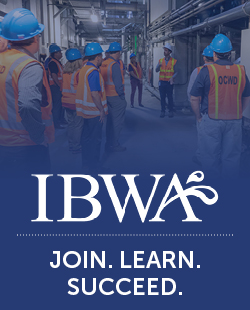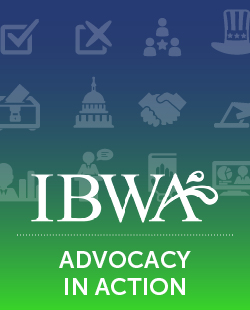Packaging
Bottled water packaging is using lighter-weight plastics and fewer natural resources. Many bottled water producers have reduced the plastic container weight for water bottles by an average of 27 percent, maybe even more.
The FDA’s safety criteria require extensive toxicity testing for any substance that may be ingested at more than negligible levels. That means the FDA has affirmatively determined that, when plastics are used as intended in food-contact applications, the nature and amount of substances that may migrate, if any, are safe.
Environment and Health
Bottled water companies work hard to protect the environment, and play an important role in promoting recycling of plastic containers and groundwater management.
The bottled water industry is one of thousands of food, beverage and commercial water users. Bottled Water companies actively support comprehensive ground water management practices that are science-based, treat all users equitably, multi-jurisdictional, and provide for future needs of this important resource. Even though it is a small ground water user, the bottled water industry has been instrumental in encouraging states to develop comprehensive, science-based ground water management and sustainability policies and laws.
IBWA members work with legislators, regulators, civic leaders, recycling advocates, and others to support legislation and initiatives that improve curbside recycling efforts and increase recycling at parks, sporting venues, other on-the-go locations, and in the home and office.
The main environmental issues IBWA focuses on are:
GROUNDWATER USE
Annual bottled water production accounts for less than 2/100 of a percent (0.02 percent) of the total ground water withdrawn in the United States each year. The bottled water industry uses minimal amounts of ground water to produce this important consumer product-and does so with great efficiency.
In the event of drought or other water supply challenges, bottlers can adjust their water withdrawal to mitigate adverse impacts on a water resource. However, the industry is just one small piece of the puzzle and other water users must adopt the same protective measures to help ensure adequate resources for all.
RECYCLING
Plastic beverage bottles are among the most recycled packaged products in the U.S., and the bottled water industry is working to reduce its environmental footprint by using lighter-weight plastics for containers and increasing the fuel efficiency in the transportation of the product to market.
Bottled water containers – from individual serving size to five-gallon jugs – are fully recyclable and should be properly recycled through whatever system a local municipality has in place.
In fact, all bottled water containers–whether plastic, glass or aluminum–are recyclable, where recycling facilities exist. IBWA actively supports comprehensive curbside recycling programs and partners with other beverage and food companies, municipalities, and the recycling industry and seeks to educate consumers and reduce litter.
When they are not recycled, convenience-sized water bottles do not make up a major part of the waste system, accounting for less than 1/3 of 1 percent (0.03 percent) all waste produced in the U.S. in 2005.
The larger bottles found on some home and office bottled water coolers can be sanitized and re-used dozens of times before the bottled water company removes them from the marketplace and recycles them. That is why the bottled water industry is considered one of the “original recyclers.”
Emergency Relief
IBWA and the bottled water industry stand ready to participate in the development of solutions to better enable federal, state and local emergency response agencies to act with greater efficiency and speed with regard to bottled water distribution and coordination in emergency relief operations. The bottled water industry has provided millions of bottled water servings in response to natural and man-made disasters, including Hurricane Katrina, the events of September 11, 2001, the tsunami in Asia, and countless other emergencies that have interrupted the delivery of safe drinking water.
IBWA’s broad-ranging expertise can help government officials better understand the issues involved as they attempt to create a more workable system.
IBWA also serves as a critical information source for members – and the public, for that matter – who are seeking to provide bottled water emergency relief supplies to communities in the wake of natural disasters or other emergencies.
This Web site hosts the “IBWA Emergency Response Directory (ERD),” which contains a list of national, regional, and local organizations and government agencies. Individuals and organizations interested in providing emergency bottled water relief supplies can use the ERD navigate successfully the proper channels and help those in need. IBWA will work to update this document on a regular basis and welcomes updated or corrections to listings.
The ERD is posted on the public portion of the IBWA web site and provide direct web links to relevant agencies and organizations, where possible.
Labeling
Because it regulates the bottled water industry, the U.S. Food and Drug Administration has standards of identity that require the type of bottled water to be clearly stated on the product label. Here’s how to read a label:
Drinking Water: intended for human consumption, sealed containers with no added ingredients, except optional Fluoride.
Purified Water: municipal-based or spring water produced by distillation, deionization, reverse osmosis, or other suitable processes while meeting the definition of purified water in the U.S. Pharmacopoeia.
Spring Water: derived from a natural underground formation or aquifer.
Artesian Water: from a well or bore hole tapping a confined aquifer.
Mineral Water: containing not less than 250 parts per million total dissolved solids, from a source tapped at one or more boreholes or springs. No minerals may be added.
Sparkling Bottled Water: after treatment and possible replacement of carbon dioxide, contains the same amount of carbon dioxide that it had at the emergence from the source.
Water helps nearly every part of the human body function efficiently. Considering that our bodies are almost two-thirds water, it is important to understand water’s role in healthy lifestyles. The following are just some of the things water does in the body:
• Brain is 75% water / Moderate dehydration can cause headaches and dizziness
• Water is required for breathing
• Regulates body temperature
• Carries nutrients and oxygen to all cells in the body
• Blood is 92% water
• Moistens oxygen for breathing
• Protects and cushions vital organs
• Helps to convert food into energy
• Helps body absorb nutrients
• Removes waste
• Bones are 22% water
• Muscles are 75% water
• Cushions joints


